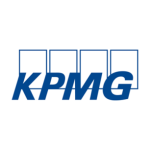Chinese tax policymakers have made various efforts over the years to drive domestic innovation and enhance the economy’s competitiveness in high-tech sectors. To this end, the integrated circuit (IC) and software sectors have benefitted from a series of corporate income tax (CIT), VAT and import tax incentives since 2012.
In recent times, global trade restrictions have impacted the flow of high-end components to China, and so policymakers have further enhanced these incentives to support domestic production of these components.
In the CIT space, the key changes are:
IC manufacturing enterprises and projects can benefit from tax holidays, with more generous benefits given to production of the newest and smallest chips. This varies from CIT exemption for 10 years (28NM circuits and 15 year planned operations), to five year exemption and five year half CIT rate (i.e. 12.5% vs the standard 25%) subsequently (65NM and 15 years operations), to two year exemption and three year half CIT rate (130NM and 10 years operations). The 28NM incentive is a policy effective from 2020.
For the eligible IC manufacturing enterprises, losses have a longer tax loss carry forward period (i.e., 10 years, vs the standard five years); and
Key IC design and software enterprises can be exempt from CIT for the first five years and then be subject to a 10% CIT rate for the subsequent years. Eligible enterprises will be identified by National Development and Reform Commission (NDRC) and Ministry of Industry and Information Technology (MIIT).
Alongside the above, existing preferential VAT policies have been rolled over. A refund of carried forward excess input VAT balances may be granted to IC enterprises. Enterprises in China typically cannot get refunds and need to carry balances forward for future offset, so this is a preferred treatment. Software enterprise can enjoy a ‘refund-upon-levy’ policy, i.e. effective VAT burdens in excess of 3% can be refunded post-collection.
For imports made by IC and software enterprises, an exemption is available from import duties and VAT. These tax incentives are available for both Chinese and foreign-invested enterprises. In parallel, the Chinese government has also set out preferential non-tax policies to facilitate IC and software enterprise conduct of initial public offerings (IPOs), financing, research and development (R&D) and talent cultivation.
The IC industry, as well as other key high-tech sectors such as artificial intelligence (AI), biological medicine, and civil aviation, can also enjoy preferential CIT treatment in China’s free trade zones (FTZs). The Shanghai FTZ Lingang new area recently announced that, for enterprises engaged in the above-mentioned businesses, a 15% CIT rate can be applied for the first five years of establishment. Qualification requires substantive manufacturing or R&D activities.
China has also made efforts to cut red tape. The State Council recently announced plans to simplify filing procedures for VAT and other tax incentives, and eliminating pre-approval requirements. In parallel, the government authorities, including the NDRC, have set targets for the processing time for new business establishment to be capped at four working days by the end of 2020.
Lewis Lu
T: +86 21 2212 3421












